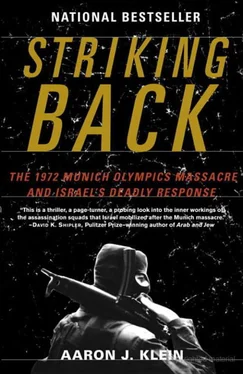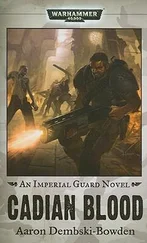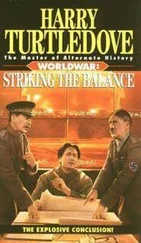Today, Abu-Daoud, like so many Palestinians, is still convinced that the Mossad, with its long reach, elephantine memory, and unwillingness to forgive, was behind the attempt on his life. That is part of the myth that both Israelis and Palestinians believe in. But the assassination attempt in Warsaw was probably executed by Abu Nidal’s agents or another adversarial group within the PLO. It was not the Mossad that came to kill him.
For years after the assassination attempt Abu-Daoud went by the name Tariq and lived comfortably behind the Iron Curtain in East Germany, Poland, and Bulgaria. During that period it was nearly impossible for the Mossad to reach him; his name was hardly ever mentioned in the assassination forums.
In early January 1977, three and a half years before the assassination attempt in Warsaw, less than five years after the Munich Massacre, the Paris police were forced to arrest Abu-Daoud. In France to attend a friend’s funeral, he carried a forged Iraqi passport with the name Yousef Raji Hanna. His entry visa had been inserted by officials at the French consulate in Beirut, as part of a PLO delegation. His presence and his cover were leaked. West Germany formally requested his extradition, hoping to try him in the still pending case of the murder of Israeli athletes at the Munich Olympics. Israel issued no such appeal. Bereaved family members of the athletes issued a private extradition request to the French embassy signed by a lawyer. A widely publicized picture of the children of the murdered athletes holding pictures of their dead fathers made little impression on the French authorities. They released Abu-Daoud, whisking him off to Algeria, where he received a hero’s welcome. The French government explained its actions: the West German request had not arrived in time.
According to a distinguished well-placed person who lived through the era and has taken part in shaping Israeli policy, the fact that Abu-Daoud is alive today is an Israeli failure, a blight on the defense establishment. “He should have been killed for his role in Munich,” this person argued, “but too many people were insufficiently determined to follow through.” Abu-Daoud, and two of the perpetrators of the massacre, are still alive. The mission was never fully accomplished, nor will it ever be. Their names were taken off the list a long time ago; today, their files sit in the Mossad archive, collecting dust.
Israel’s intention after the Munich Massacre was to strike back at Fatah’s senior Black September officials, to identify and kill those who had sent the murderous squad to Munich—as well as anyone else who persistently targeted Israelis abroad. That message, delivered with a bullet or a bomb, would, it was hoped, deter and hinder terrorist capabilities, and, certainly, satisfy Israel’s thirst for revenge and punishment. Munich was the trigger, and for many years, assassination became a new tool in the war on terror.
However, members of the intelligence community soon realized that despite their unwavering devotion to the cause, which they saw as a mission of national importance, they were unable to exact a price from the top-level leaders. Men like Abu-Daoud, the commander of the Munich mission, and Abu-Iyad, deputy to Arafat and the true architect of the Olympic terror attack, remained beyond reach, unscathed. The combination of poor intelligence-gathering capacities on the one hand, and the flight of top leaders underground on the other, made operational plans against them nearly impossible. When, on rare occasions, the Mossad was ready to go, the risk to Caesarea combatants suspended the mission, often at the last minute.
The inability to strike back at Fatah’s top Black September leaders was at odds with the rousing calls, from the defense establishment, the Knesset, and, primarily, the public, to settle the score. A compromise of sorts was born from this untenable situation: the government agreed to allow the Mossad and Military Intelligence to conduct their target search a few notches beneath the Fatah’s shrouded upper echelons, thereby enabling a seemingly fitting response, but one that, from 1972 to 1973, claimed the lives of numerous low-level, easily accessible activists—along with the more significant targets killed during Operation Spring of Youth.
Those targeted during those years were not directly connected to the Munich Massacre. Yet they were profiled in ways that implied direct culpability. One would be presented, through leaks to the media, as the “senior Black September representative in Paris,” another as the “Black September leader in Italy.” Such titles not only satisfied the prime minister’s and the nation’s desire for revenge and resolution, but also eased the bitterness of the pill that European nations were forced to swallow, as Israel, with considerable chutzpah, disregarded their sovereignty time and again.
In those days, the Israeli public preferred to sidestep the question of whether or not it was just to kill Wael Zu’aytir, the translator of One Thousand and One Nights. The public’s faith in the Israeli defense establishment was unwavering. Everyone bought into the evolving myth of the Mossad’s infallibility. The Mossad always got their man; if someone was found dead, then they must be guilty. The myth was so potent that it spread to the Palestinian Diaspora. An assassinated Palestinian, even someone thought to be completely outside the fray of the armed struggle, was immediately elevated to the status of hero of the armed Palestinian resistance. The Mossad, after all, had taken the trouble to track him and kill him hundreds of miles from home.
The myth’s power grew exponentially in Palestinian minds after Operation Spring of Youth. Israel’s ability to attack and kill Arafat’s deputy in his own bedroom left an indelible mark on all terrorists and activists. The threat of a sudden death followed them everywhere. Not even the incompetent and fatal blunder in Lillehammer could diminish the Mossad’s aura of invincibility.
Thousands of officers, analysts, and combatants in the Mossad and Military Intelligence had no doubt that, in their pursuit of Palestinian activists, they were fulfilling the will of their people and were embarked on a mission of supreme national importance—spearheading the war on Palestinian terrorism. As events unfolded, they believed in their hearts that the assassinations they carried out were worthy acts, the evidence of guilt always sufficient to warrant death. The climate was different then. The covert operatives of the Mossad and Military Intelligence had been chosen to deliver justice in a distant land—and their eagerness to act was extraordinary.
As the desire to avenge the murder of the athletes subsided, the utility of assassinations—if not their justness, which is well beyond the scope of this book—became clear. Assassinations were seen as the reason that Palestinian terror grew silent in Europe. Buoyed by their success, Israel used the same tool in Lebanon in the 1980s.
For twenty years, almost no public cost-benefit analyses were conducted on the subject of assassinations. In 1992, Israeli air force helicopters fired hellfire missiles into the car of Abbas Musawi, head of the Shiite terrorist organization Hezbollah; Hezbollah responded, two months later, with an attack on the AMIA building in Argentina, claiming 196 lives. Deterrence had become a two-way street, and now a public debate erupted over whether assassinating the heads of terrorist organizations was worth it. In January 1996 Israeli agents assassinated “The Engineer,” Yihya Ayash, a man responsible for countless terror attacks and one of the fathers of the tactic of suicide bombing. Hamas, the Palestinian terror organization he belonged to, responded with multiple bombings. Again, the public debated whether Ayash’s assassination was worth the price. When there was no reprisal, there was no discussion. In 1995, Mossad combatants killed Fatkhi Shkaki, head of Islamic Jihad. There was no counterattack—the organization was paralyzed for years—and no debate.
Читать дальше












